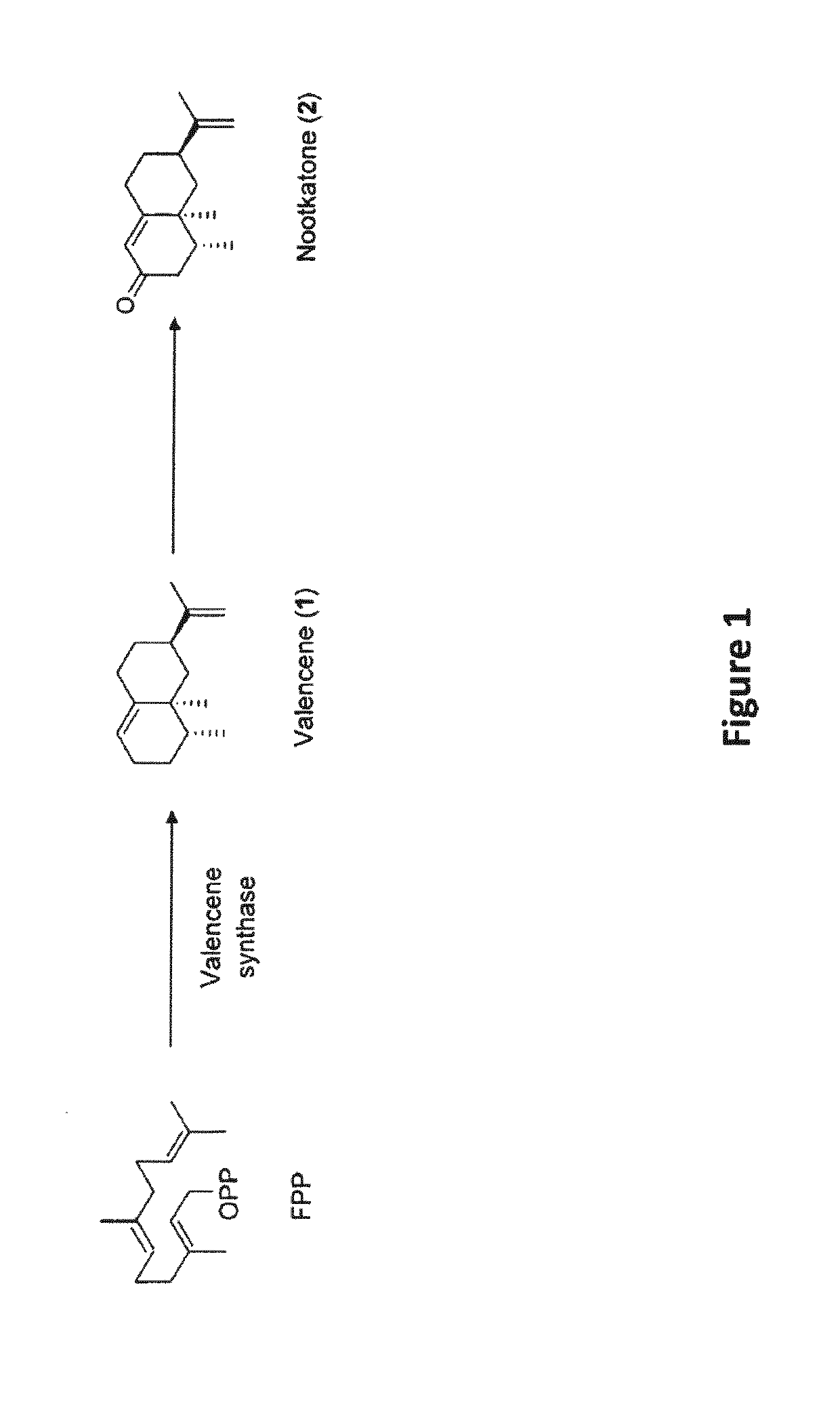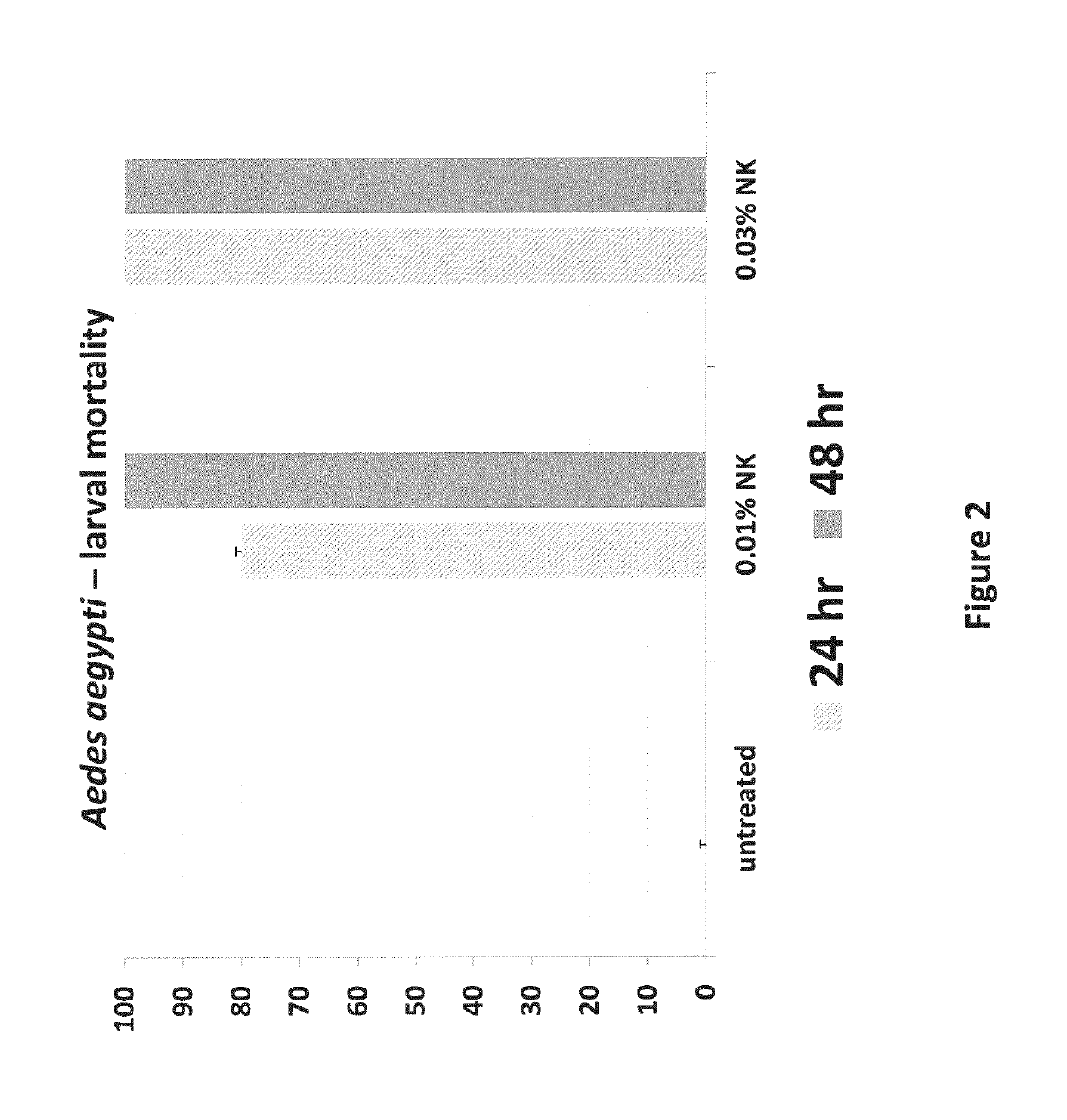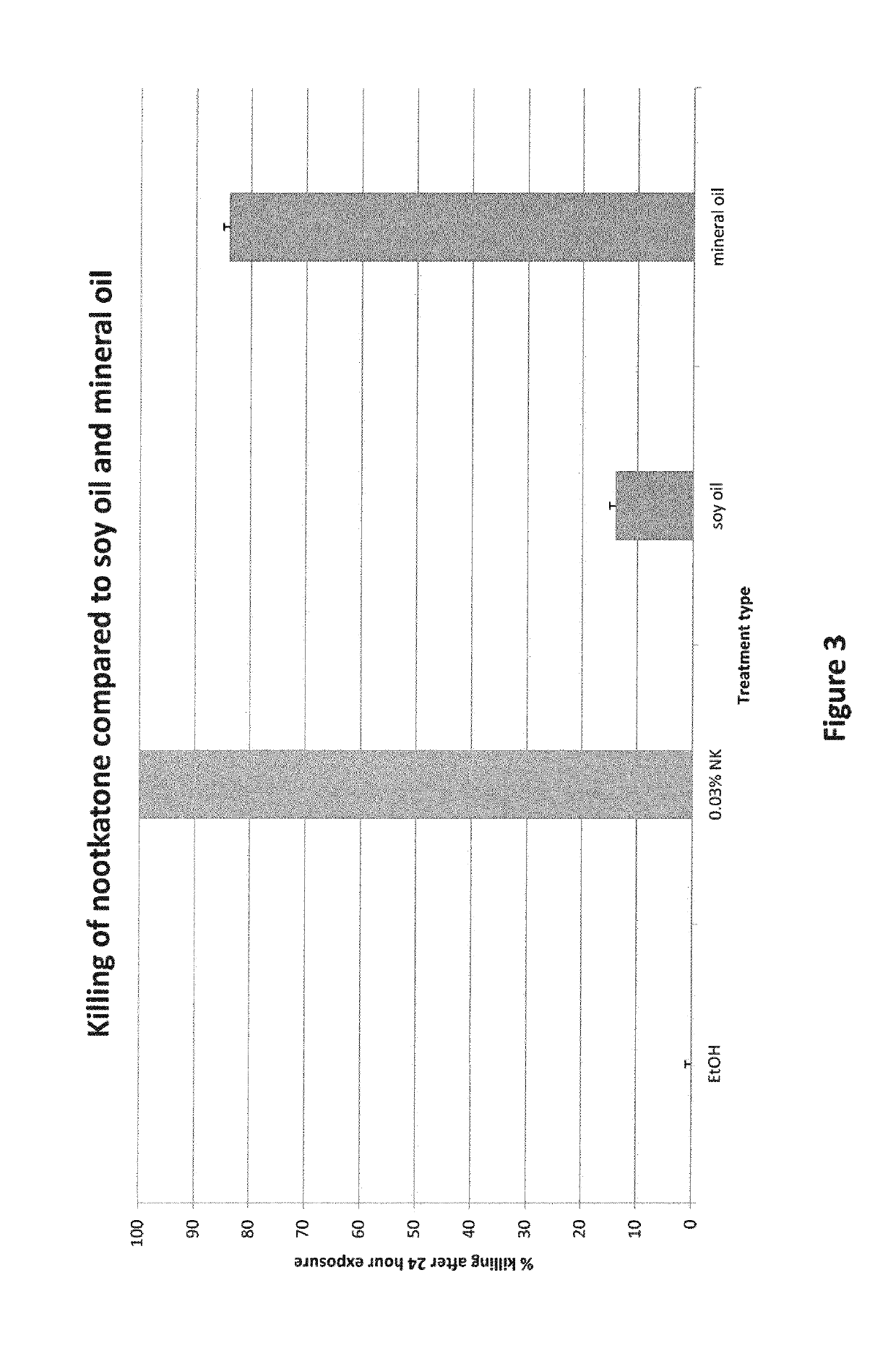Use of nootkatone to treat and prevent mosquito infestations
a mosquito and nootkatone technology, applied in the field of nootkatone to treat and prevent mosquito infestations, can solve the problems of inability to reduce the concentration of deets, the perception cannot be remedied by lowering the concentration, and the health risks of malaria continue to be enormous
- Summary
- Abstract
- Description
- Claims
- Application Information
AI Technical Summary
Benefits of technology
Problems solved by technology
Method used
Image
Examples
examples
[0105]The Examples that follow are illustrative of specific embodiments of the invention, and various uses thereof. They are set forth for explanatory purposes only and are not taken as limiting the invention. In particular, the examples demonstrate the effectiveness of nootkatone-containing compositions against each mosquito life cycle stage population.
example no.1
Example No. 1: Susceptibility of Mosquito Larvae to Treatment with Nootkatone Formulations
[0106]This example describes a laboratory bioassay in which groups of mosquito larvae were exposed to a nootkatone-containing composition to determine larval susceptibility to nootkatone.
[0107]The organisms used for testing are shown in Table No. 2 below.
TABLE NO. 2Organisms used for testing.NameScientific nameLife stage / sexYellow feverAedesaegypti3rd / 4th instarmosquitolarvae / mixedsexMalariaAnopheles3rd / 4th instarmosquitoquadrimaculatuslarvae / mixedsex
Treatment
[0108]One milliliter of a solution of nootkatone in ethanol was applied directly to 100 milliliters of water containing larvae, using a micropipette. One treatment condition used 3% (v / v) nootkatone in ethanol, and a second treatment condition used 1% (v / v) nootkatone in ethanol, for final concentrations of 0.03% or 0.01% (v / v), respectively. One milliliter of pure ethanol was used as a control. Four replicates of 25 larvae were tested per...
example no.2
Example No. 2: Susceptibility of Mosquito Larvae to Treatment with Formulations that Contain Oils without Nootkatone
[0117]This example describes a laboratory bioassay in which groups of mosquito larvae were exposed to compositions that contain oils, but not nootkatone, to determine whether larval mortality was due to suffocation by oils in general, or due to a specific property of nootkatone.
[0118]The organisms used for testing were mosquito larvae, as shown in Table No. 2 above.
Treatment
[0119]One milliliter of a solution of oil in ethanol was applied directly to 100 milliliters of water containing larvae, using a micropipette. One treatment condition used 3% (v / v) soybean oil in ethanol, and a second treatment condition used 3% (v / v) mineral oil in ethanol, for final concentrations of 0.03% (v / v), respectively. One milliliter of pure ethanol was used as a control, and 0.03% (v / v) nootkatone in ethanol was included as a comparison of efficacy. Two replicates of 25 larvae were tested...
PUM
 Login to View More
Login to View More Abstract
Description
Claims
Application Information
 Login to View More
Login to View More - R&D
- Intellectual Property
- Life Sciences
- Materials
- Tech Scout
- Unparalleled Data Quality
- Higher Quality Content
- 60% Fewer Hallucinations
Browse by: Latest US Patents, China's latest patents, Technical Efficacy Thesaurus, Application Domain, Technology Topic, Popular Technical Reports.
© 2025 PatSnap. All rights reserved.Legal|Privacy policy|Modern Slavery Act Transparency Statement|Sitemap|About US| Contact US: help@patsnap.com



